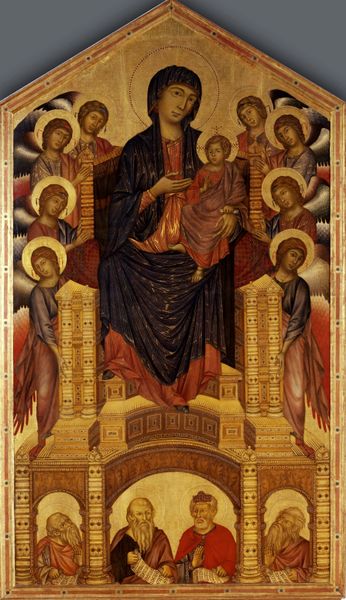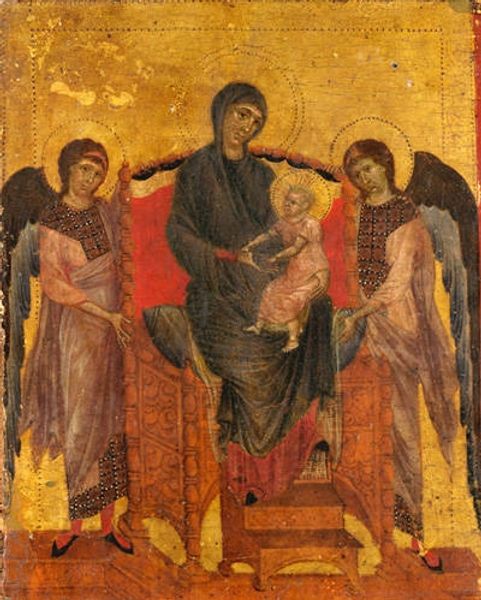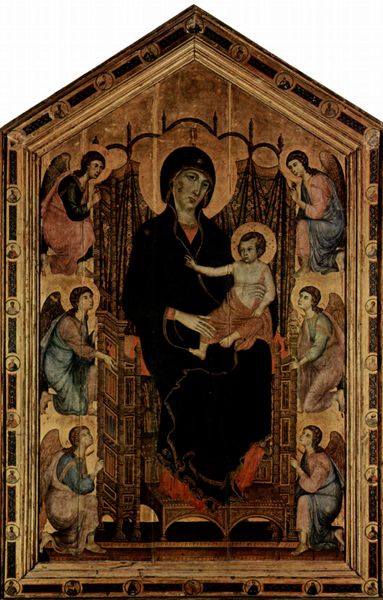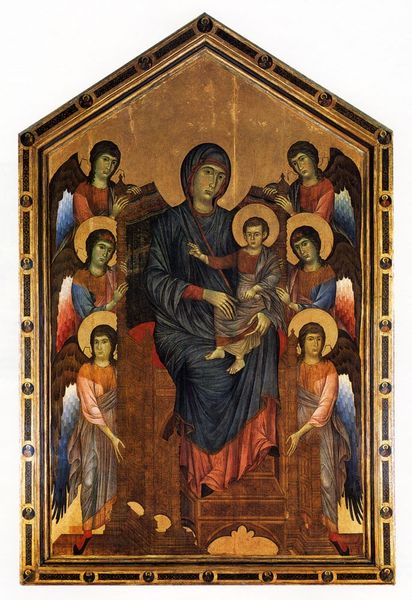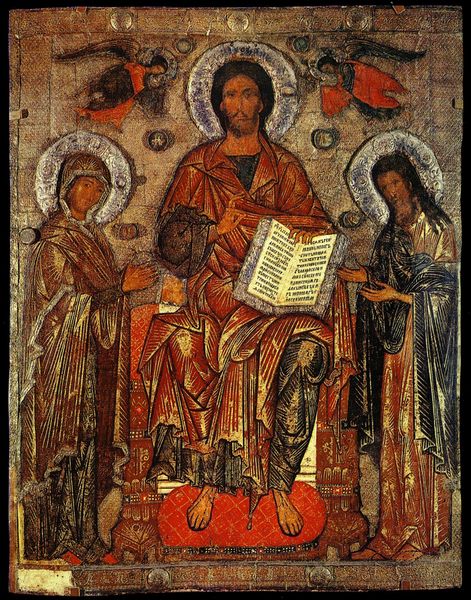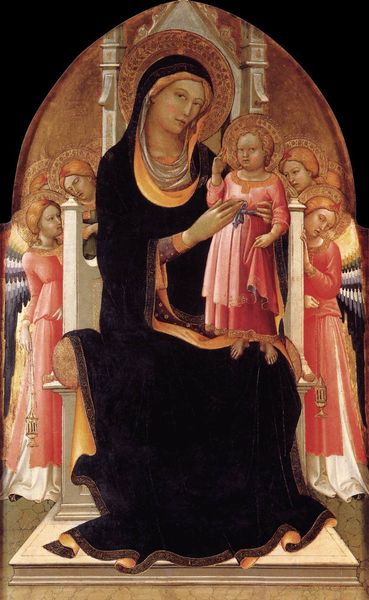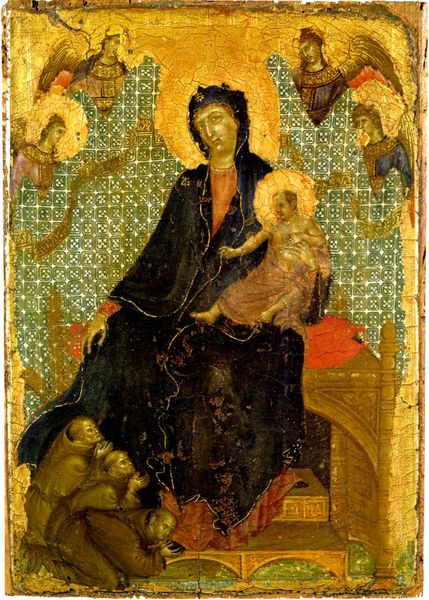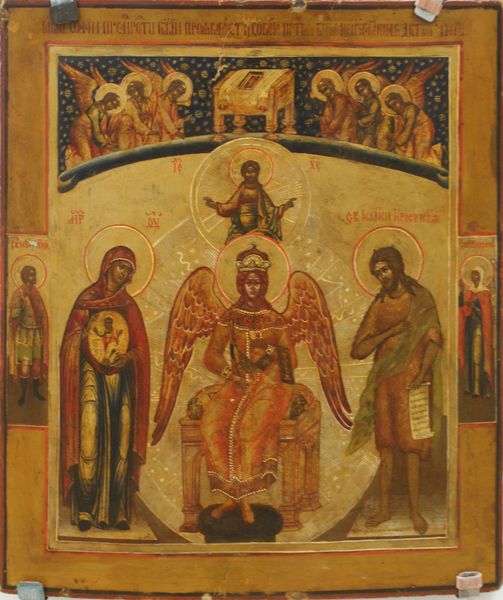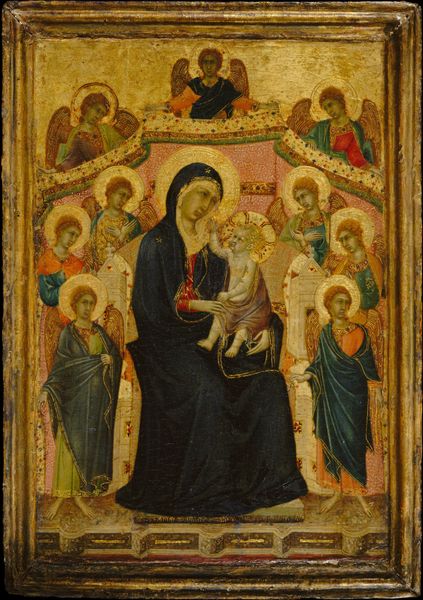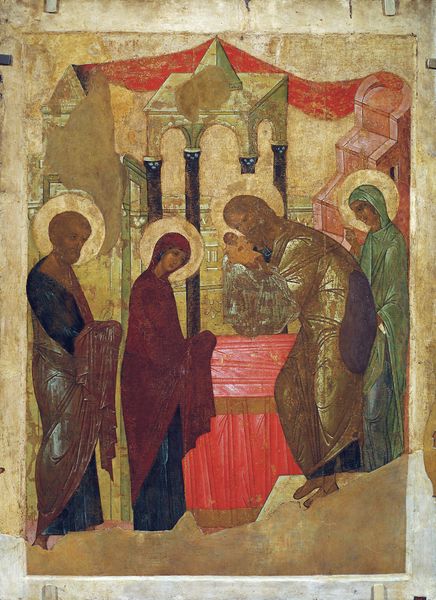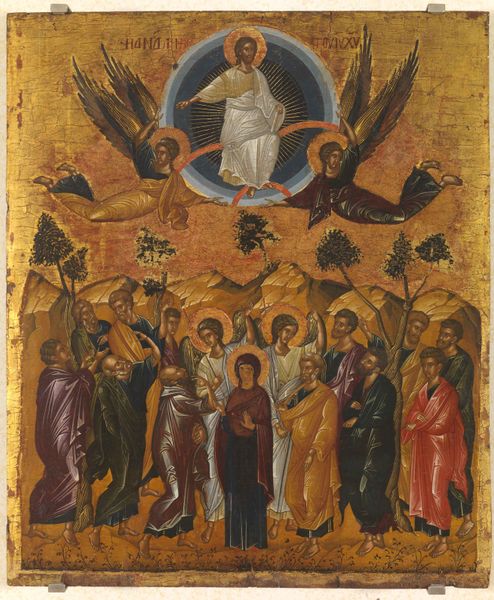
panel, tempera, painting
#
portrait
#
medieval
#
panel
#
tempera
#
painting
#
sienese-school
#
holy-places
#
indigenism
#
figuration
#
oil painting
#
child
#
arch
#
christianity
#
history-painting
#
academic-art
#
early-renaissance
#
miniature
#
fine art portrait
#
angel
Copyright: Public domain
Curator: Standing before us is Duccio di Buoninsegna's tempera on panel painting, *The Madonna and Child with Angels*, created around 1307. Editor: The first thing that strikes me is its radiant stillness. Despite the rich details, it possesses an almost ethereal calm. Curator: Indeed. Let's consider how Duccio has achieved this. Observe the hierarchical composition. The Madonna is centrally placed, elevated on her throne. The six angels arranged around her, frame and almost protect, this central relationship. Editor: And let’s consider those visual choices more closely. The virgin and child icon was not just about faith, but about power—legitimizing social hierarchies that echoed the celestial order. Note how Mary's gaze avoids the viewer. What does it mean when we are denied a reciprocal relationship with such a revered figure? Curator: Functionally, the averted gaze draws our attention deeper into the artwork. Consider the rich color palette. The reds and golds used lavishly here not only denote royalty, but the gold ground speaks to divine light permeating the scene. Editor: Exactly, divine light purchased and consecrated by very worldly money. The lapis lazuli used to create that glorious, but ultimately somber dark cloak on Mary, was incredibly expensive. Who had access to images like this and what messages did it reinforce? These were certainly not for the common people. Curator: Still, think about how Duccio used his lines—soft, flowing lines—and the delicate shading to give depth to their faces. It creates an intense humanity despite its religious tone. The halos add an essential flat, almost iconic presence and play with our sense of dimension. Editor: True, technique matters. But the image's sustained power, I would argue, lies in its simultaneous demonstration and reinforcement of the cultural beliefs and class divides of its era, that even now continue to have ramifications in how we perceive value and belonging. Curator: A point well taken, revealing how a focus on pure aesthetics cannot divorce itself from our complex understanding of culture. Editor: Precisely. Studying artworks is an entry point into dissecting the belief systems encoded within our societies.
Comments
No comments
Be the first to comment and join the conversation on the ultimate creative platform.
